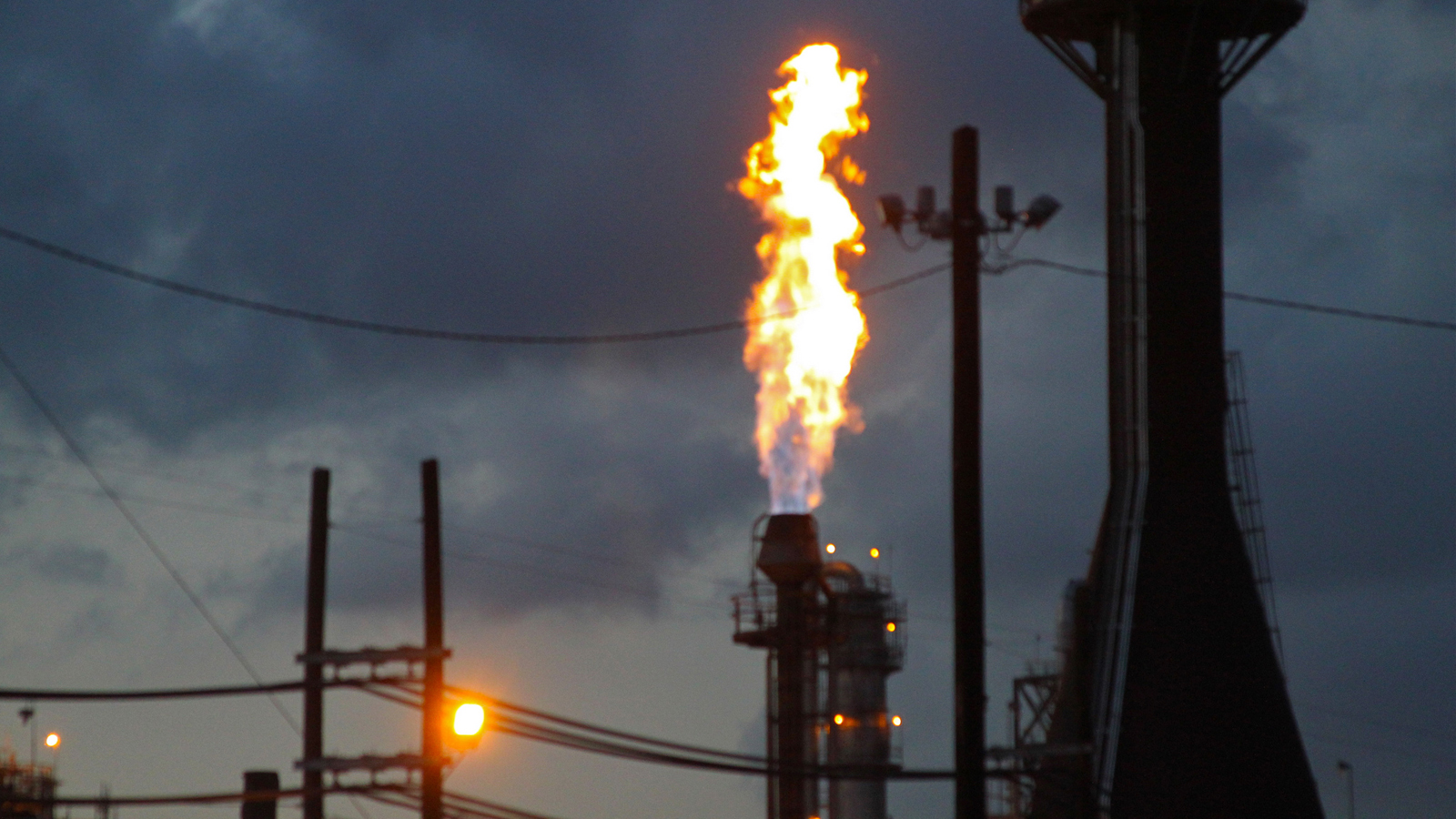Imagine a future when burning fossil fuels remains the norm, even as humanity realizes it has no choice but to stop climate change. It isn’t hard to do, in fact, you can see that future in the present-day statements from Republicans like Senator John Barasso, Republican from Wyoming. Barasso has made a habit of calling for climate action while celebrating the coal industry.
Here’s a thought experiment. What would a serious attempt to limit warming look like if it actually followed Barasso’s lead? Would it work to focus on scrubbing carbon dioxide out of the atmosphere, rather than shutting down all the car engines and industrial smelters that put the carbon there in the first place. That’s the question asked by a new paper just published in the journal Nature Communications. The short answer: It would be one of the most expensive and wildly inefficient ways of tackling climate change.
The study envisions a world with carbon capture plants around every corner: A fleet of thousands of fan-walled factories plucking CO2 from the air and piping it to underground repositories. You could imagine taking a trip in your gas-powered car and seeing scores of these carbon suckers, along with the rising girders of a dozen more under construction. The study estimates such a program would cost more than a trillion dollars a year — more than the entire budget of the U.S. military — and gobble up 14 percent of the world’s annual electricity production by 2075. Carbon removal would become one of the world’s major industries.
Most studies of this ilk try to show the least costly ways to stop climate change. But in doing so, they assume the existence of a smooth, top-down political process, where people suddenly agree to take pragmatic steps. This study does something different: It asks what would happen if the politics never reach a consensus in which everyone agrees on those low-cost approaches.
“If you were a hegemon with unlimited power to shape climate policy, you wouldn’t do a program like this, it doesn’t make any sense,” said Ryan Hanna, an energy research scientist at the University of California, San Diego and lead author of the paper. “It only makes sense if the conventional options of eliminating greenhouse gases become muddied and vexed. But the last 40 years, where that’s exactly what has happened, bears it out as a plausible scenario.”
Direct air capture plants are politically attractive, because they allow politicians to talk about addressing climate change without breaking with the status quo of fossil fuel extraction, distribution, and use, Hanna said. It’s technology that allows oil and gas companies the opportunity to play a part in the solution, rather than being an intractable part of the problem, dead set against meaningful climate action.
Occidental Petroleum is already attempting this transformation, announcing plans to build a massive carbon capture plant in December. “We are not afraid of the transition out of oil and gas, because we’re a part of that transition,” Occidental’s CEO, Vicki Hollub, told reporters. “I do believe that in 15 to 20 years, more of our income will be from carbon management than from oil and gas.”
The study says that building carbon capture plants across the world could reverse climate change before 2100. But in that period, world temperatures would still rise by around 2.5 degrees Celsius (4.5 degrees Fahrenheit). That’s hot enough that nearly half of the people on earth would experience severe heatwaves every five years — the kind of thing where health officials tell you to shelter inside with a spray bottle and fan. That said, Hanna said the study was not designed as a warning of a dystopian future.
“I don’t see it as dystopian, I don’t see it as advocacy, and I don’t see it as a logical first choice,” he said. “It’s merely instructive. There are good political economy reasons to turn to direct air capture. We wanted to know what would happen if, like a drunken sailor, you put all the chips on direct air capture.”


